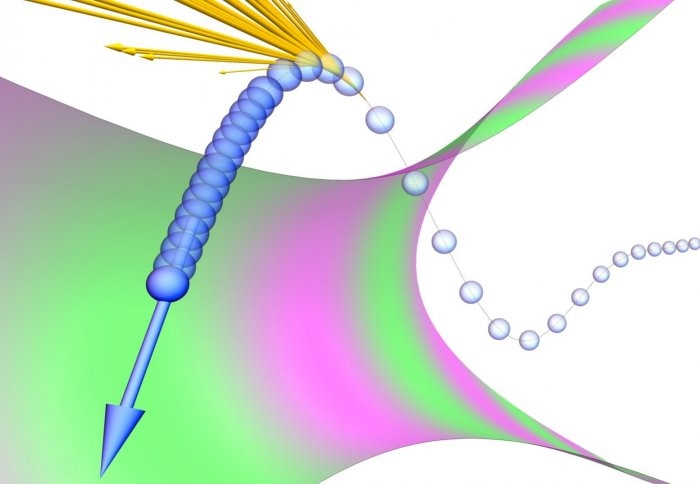Feb 8 2018
Scientists have unearthed dynamics that are far superior to “classical” physics and look similar to quantum effects, by striking electrons with an ultra-intense laser.
 Image credit: Imperial College London
Image credit: Imperial College London
When light hits an object, part of it gets scattered back from the surface. In contrast, if the object is traveling at exceptionally higher speeds, and if the intensity of light is fascinatingly high, the outcomes may be unanticipated.
For instance, electrons can vibrate so vigorously that they slow down, as they liberate a considerable amount of energy. This process is termed “radiation reaction” by physicists.
This radiation reaction is considered to take place close to objects such as quasars and black holes, where quasars are supermassive black holes enclosed by a disk of gas. The potential to evaluate radiation reactions in the laboratory will offer in-depth knowledge of processes taking place in extreme environments in the universe.
Radiation reaction also intrigues physicists investigating effects superior to “classical” physics, since the equations, called Maxwell’s equations, that conventionally describe the forces affecting objects fail to live up to such drastic environments.
At present, a research team headed by Imperial College London has, for the first time, carried out radiation reaction in the laboratory. The outcomes were reported in the Physical Review X journal on February 7, 2018.
Successful Collisions
The team could notice this radiation reaction by striking a high-energy electron beam on a laser beam with a brightness one quadrillion, or a billion million, times brighter than the light at Sun’s surface. The experiment mandated exquisite timing, and exceptional accuracy was accomplished by using the Gemini laser at the Science and Technology Facilities Council’s Central Laser Facility in the United Kingdom.
Light photons reflected from an object traveling close to the speed of light have elevated levels of energy. Under the drastic conditions of this experiment, this transfers the reflected light from the visible portion of the spectrum to the higher energy gamma rays. This effect allowed the scientists to realize the time they had successfully struck the beams.
According to Dr. Stuart Mangles, senior author of the research, from the Department of Physics at Imperial, “We knew we had been successful in colliding the two beams when we detected very bright high energy gamma-ray radiation.”
“The real result then came when we compared this detection with the energy in the electron beam after the collision. We found that these successful collisions had a lower than expected electron energy, which is clear evidence of radiation reaction.”
Professor Alec Thomas, the co-author of the study from Lancaster University and the University of Michigan, said “One thing I always find so fascinating about this is that the electrons are stopped as effectively by this sheet of light, a fraction of a hair’s breadth thick, as by something like a millimetre of lead. That is extraordinary.”
The experimental data is also in better agreement with a theoretical model dependent on the principles of quantum electrodynamics, and not Maxwell’s equations, prospectively offering some of the first proof of hitherto uninvestigated quantum models.
How to Make Intense Light
Professor Mattias Marklund, co-author of the study, from Chalmers University of Technology, Sweden, whose team contributed to the study, stated, “Testing our theoretical predictions is of central importance for us at Chalmers, especially in new regimes where there is much to learn. Paired with theory, these experiments are a foundation for high-intensity laser research in the quantum domain.”
Further experiments at higher intensities or using electron beams of higher energy will be necessary to corroborate the hypotheses. The researchers will be performing this research in the following year.
The scientists could increase the intensity of light in the current experiment by focusing it through a minute spot—with a diameter of just a few micrometers, or one-millionths of 1 m—and discharging the entire energy in a short period, only 40 femtosecond long, or 40 quadrillionths of 1 second.
To make the electron beam adequately small to interact with the focused laser beam, the researchers adopted a method known as “laser wakefield acceleration.” This method involves firing one or more intense laser beam pulses into a gas.